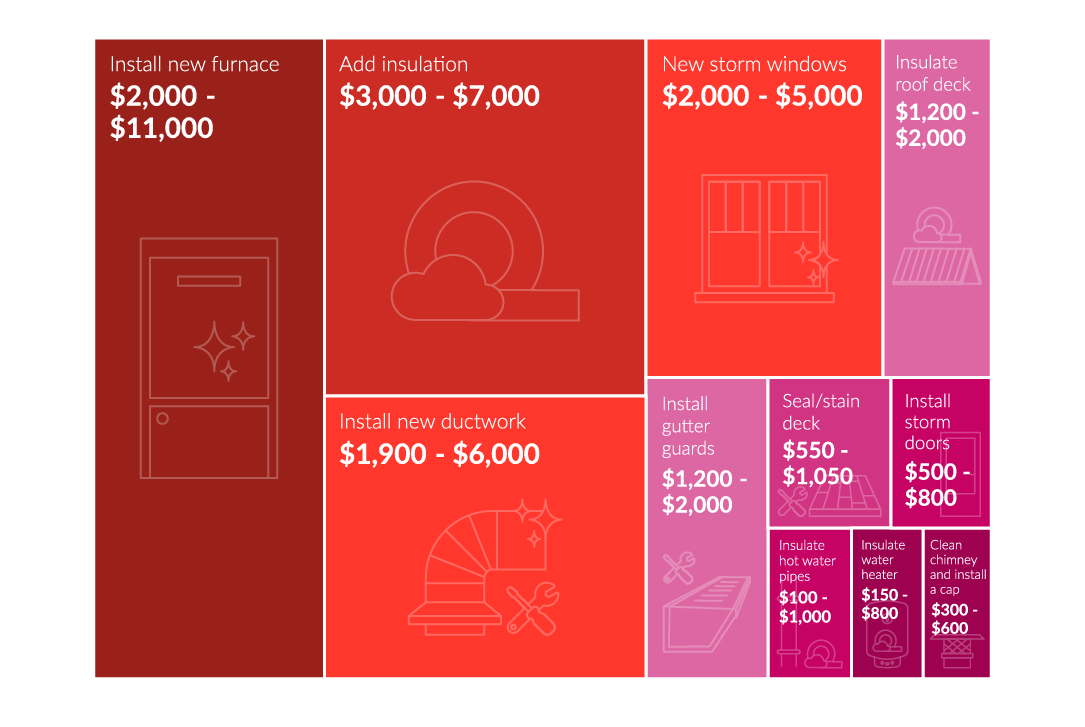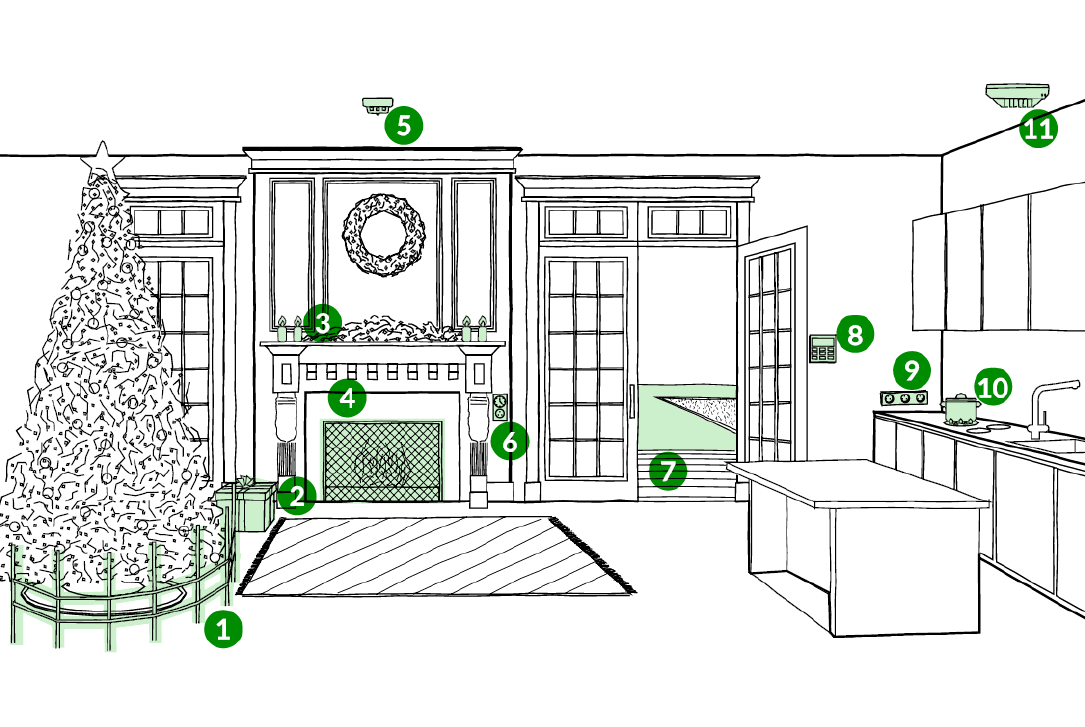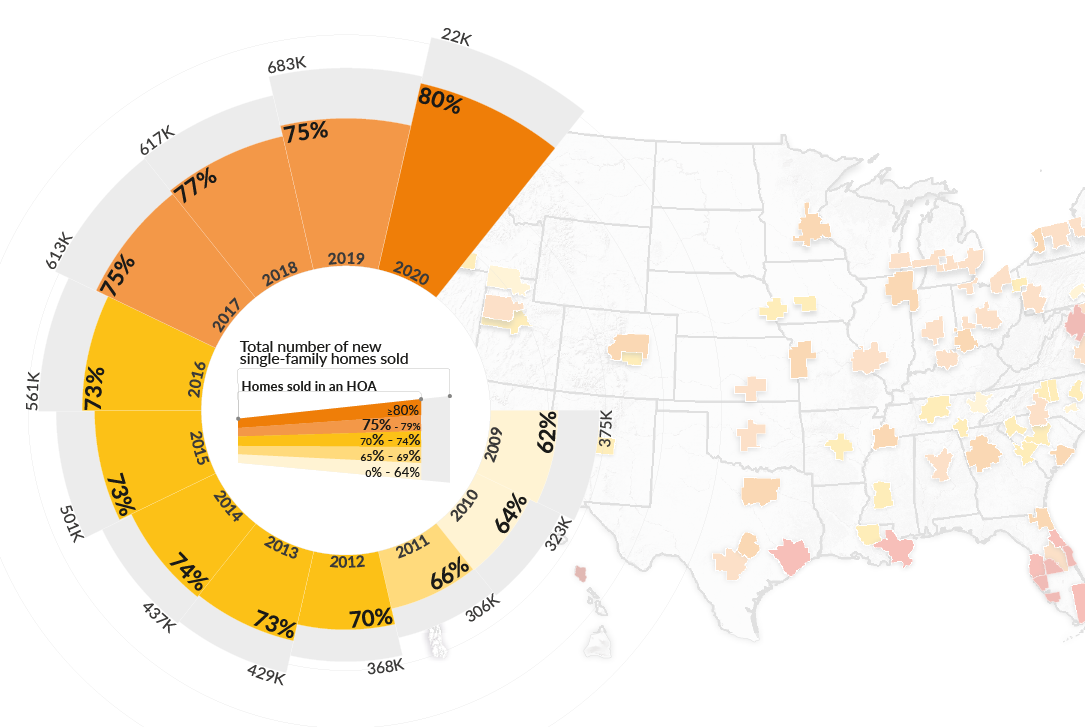Sustainable and green design have both been increasing in popularity, awareness, and availability in the last several years. In fact, green building is one of the fastest growing fields in the US at this time.
With this growth comes increased awareness from both homeowners and industry professionals. Professionals need to know what the latest materials and trends are so they can help guide their clients to make the right choices. Homeowners are also concerned, as green building techniques not only help keep their energy bills down and make their homes healthier and more valuable, but they also reduce their carbon footprint and contribute to a better environment.
Fixr.com has asked some of the top experts in the construction industry to weigh in on the interest of the average homeowner in eco-friendly homes and sustainable designs and how they are embracing and adapting these methods in their own properties.
We asked experts which are the most popular energy systems, what the main drivers for investing in this type of home design are, and how homeowners are making their homes more off-grid this year. Whether you’re an industry professional or a homeowner with a special interest, we hope that you’ll find something of value in this report.
Key findings:
- More than 90% of experts agree that interest in green home design is increasing
- Concern about climate change is the main driver for wanting a sustainable home, above energy-efficiency
- Millennials are the most interested in sustainable and green building home design
- High-recycled materials content and bamboo are the most requested sustainable building materials
- Conventional HVAC systems with high EER/SEER are the most popular green systems
- Generators and rainwater collection systems are the most requested off-grid features

Table of Contents
- Homeowners' Interest
- Main Drivers
- Interest vs Application
- The Most Interested Age Groups
- Most Requested Materials
- Most Requested Energy-Saving Features
- Most Requested Green HVAC Systems
- Interest in Off-Grid Homes
- Most Requested Off-Grid Features
Homeowners' Interest
More than 90% of Experts Agree that Interest in Green Home Design is Increasing
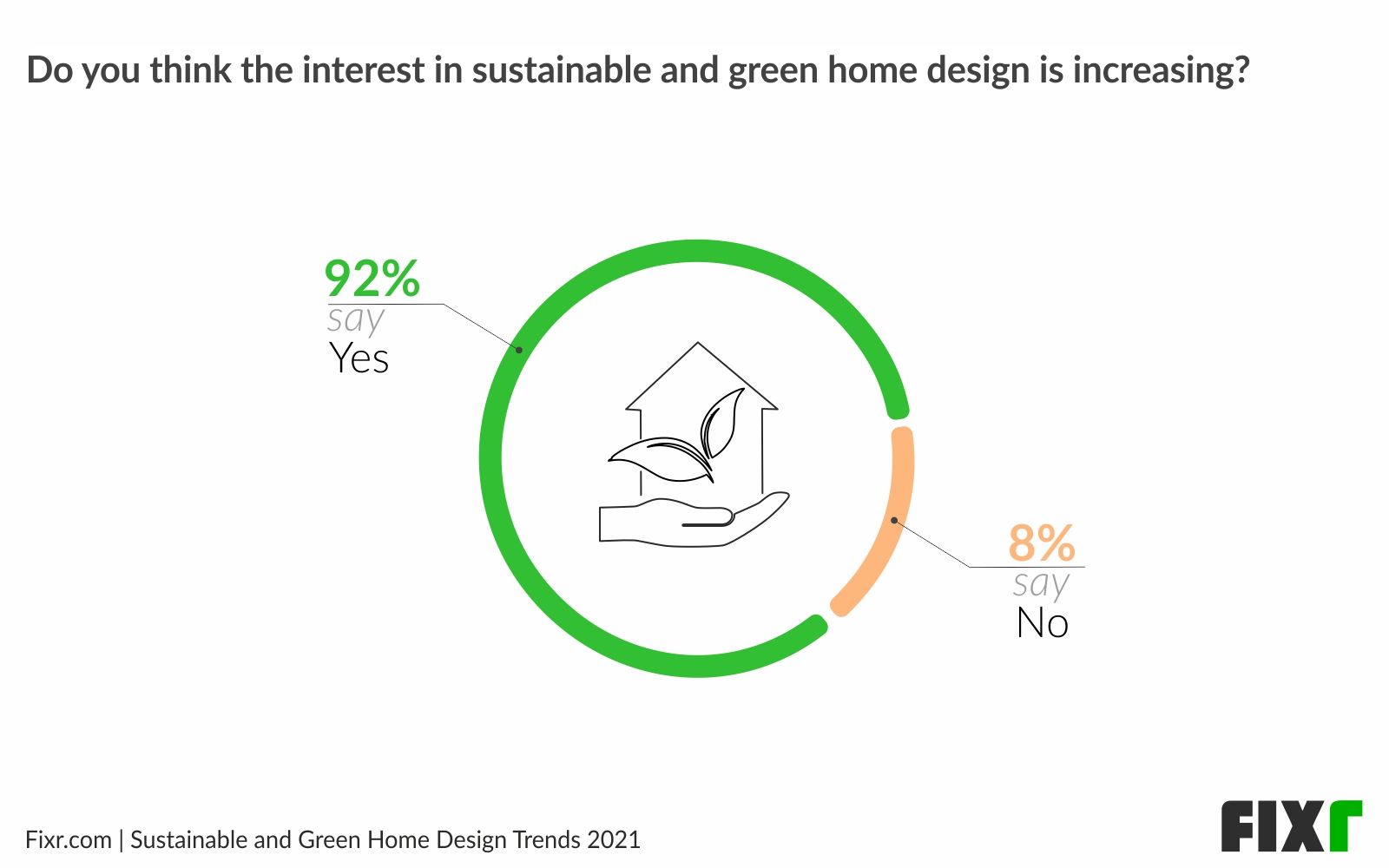
92% of experts answered that they felt that there is a growing interest in green home design. This is reflected in other reports, which show tremendous growth in LEED certified homes, as well as sustainable design in general.
Sustainable design means choosing materials and appliances that have little to no impact on the environment. This can mean using geothermal heating to reduce energy costs or using more reclaimed and recycled materials in the home.
Green home design can incorporate some sustainable features, but covers a broader variety of aspects. Green homes are made to be energy efficient, comfortable, and healthy as well as flexible in their use. Common projects may include installing formaldehyde-free cabinets or using a recycled glass countertop in the kitchen.
Concern About Climate Change is the Main Driver for Wanting Sustainable and Green Home Designs, Above Energy-Efficiency
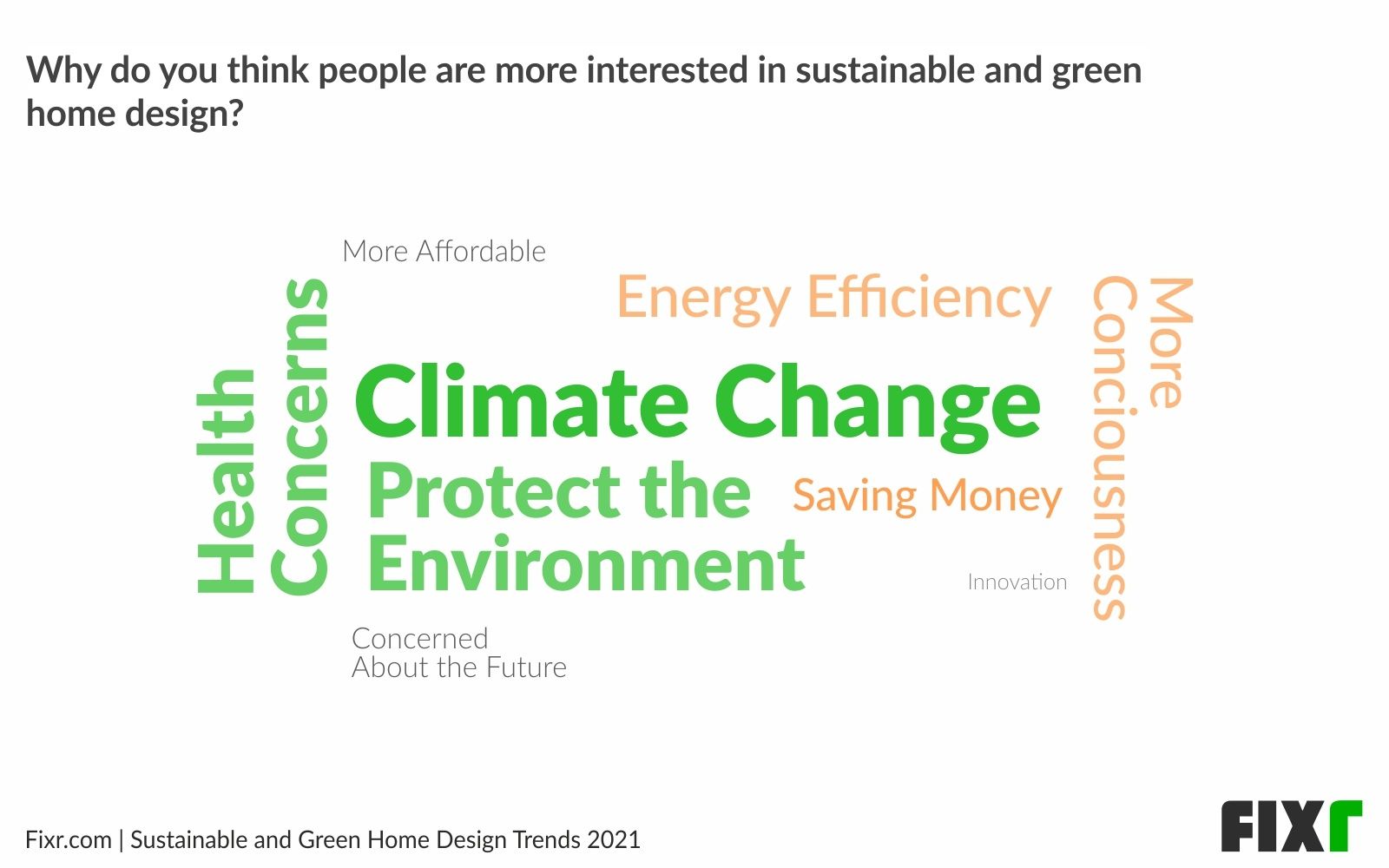
In this open question, experts were asked which factors were the main drivers behind their clients wanting sustainable and green home designs besides energy efficiency. Of the answers, climate change, followed by protection of the environment and health concerns were the three top answers.
Climate change and protecting the environment are two sides of the same coin. Climate change ultimately doesn’t just impact weather; it also impacts plants, animals, and habitats. Therefore, by making changes that can help fight climate change, you are also making changes that may also help protect the environment.
Sarabeth Asaff explains it: “It's multi-faceted. You have rising energy costs, as well as climate change making people think about the choices they make. Sustainable practices lower your energy bills and can make you feel like you're doing something to help offset larger problems.”
Health concerns are a separate issue. It is well known that certain chemicals often found in building materials, such as formaldehyde, can be hazardous to people’s health. Companies that make green resources often replace hazardous chemicals with things like soy-based glues, which are not only better for the environment, but better for homeowners as well. By choosing green building materials, you can ultimately be achieving a healthier home as well.
As for other driving factors, such as the development and more affordable cost of these options, Jay Kallos adds, “The evolution of products available are gaining attention and driving down prices. We have always found great interest in green building and sustainability until the cost is brought into the conversation”
Most Homeowners are Somewhat Likely to Care About Sustainability and Green Materials in Their Homes
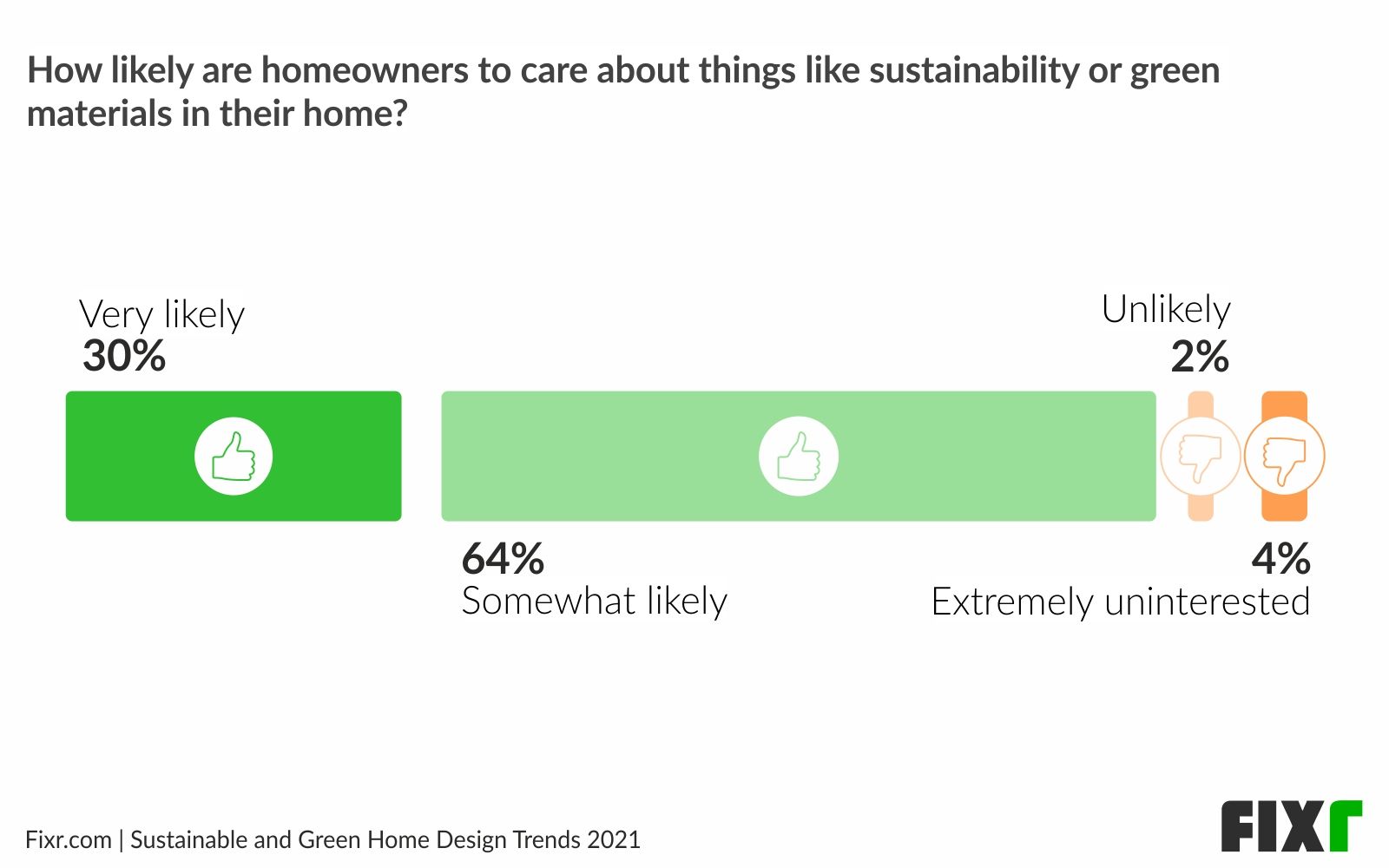
While it seems that interest is definitely growing, 64% of experts say that their clients are only somewhat likely to care about these issues in regards to their homes. Another 30% are very likely to care as well. Together they add up to more than 90%, although a possible gap between interest and eventual application could also be seen, delaying the implementation of some of these materials and techniques. A reason for this may be that homeowners could still be feeling things out to determine what will be best for their home in the long run.
Millennials are The Most Interested in Sustainable and Green Building Home Design
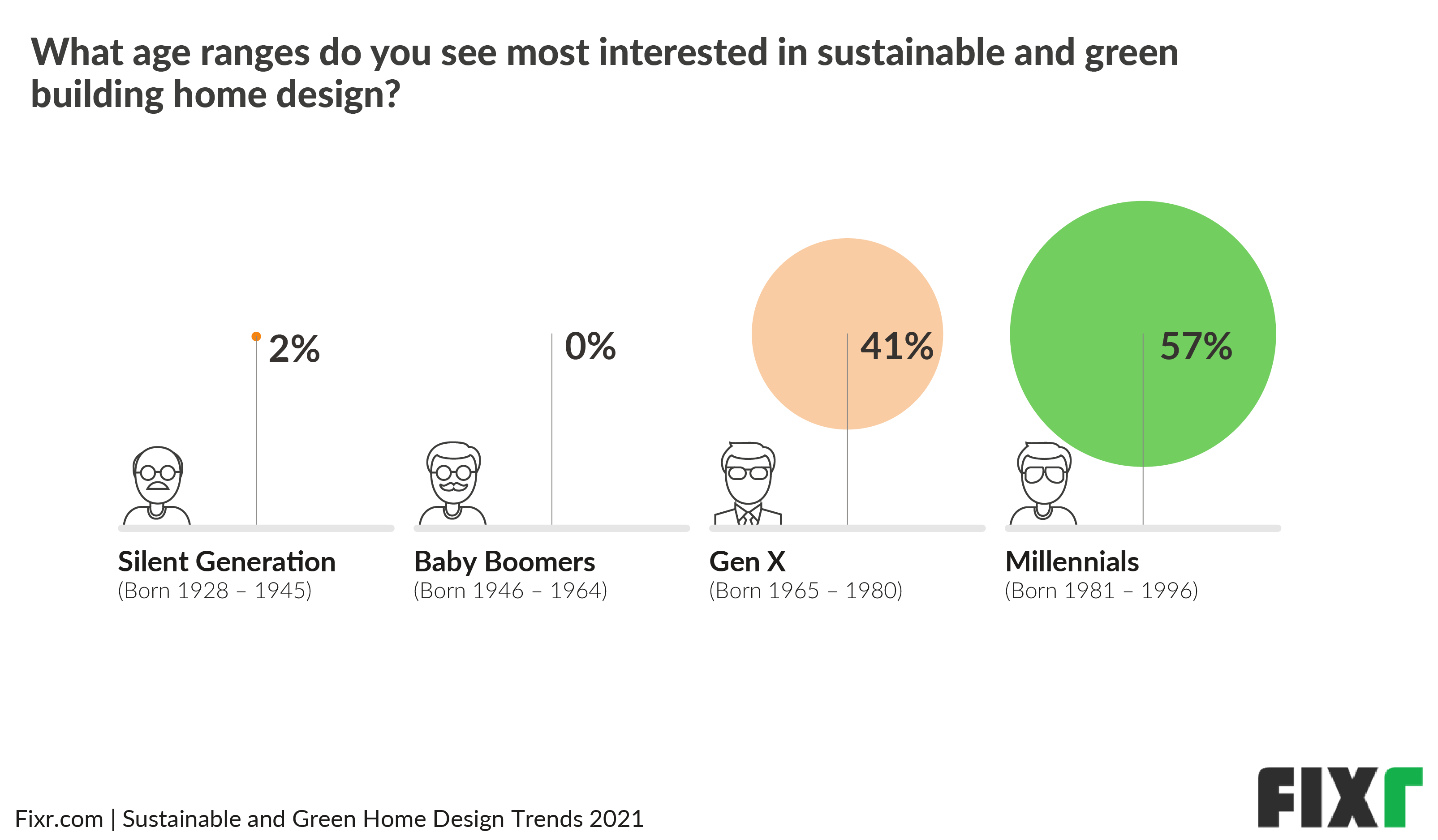
Millennials are the most interested in sustainable and green building trends according to 57% of experts. Gen X follows closely behind at 41%. Experts report that 2% of the Silent generation are also interested, but no expert said that Baby Boomers are among the most interested. Younger generations have shown a greater consciousness about the environment in general than older generations. Besides that, Millennials are more educated than previous generations, and this education may have included more awareness of more current, pressing environmental issues than before,, which places them in the forefront of sustainability.
Green Home Construction Materials, Features and Energy Systems
High-Recycled Materials Content and Bamboo Are the Most Requested Sustainable Building Materials
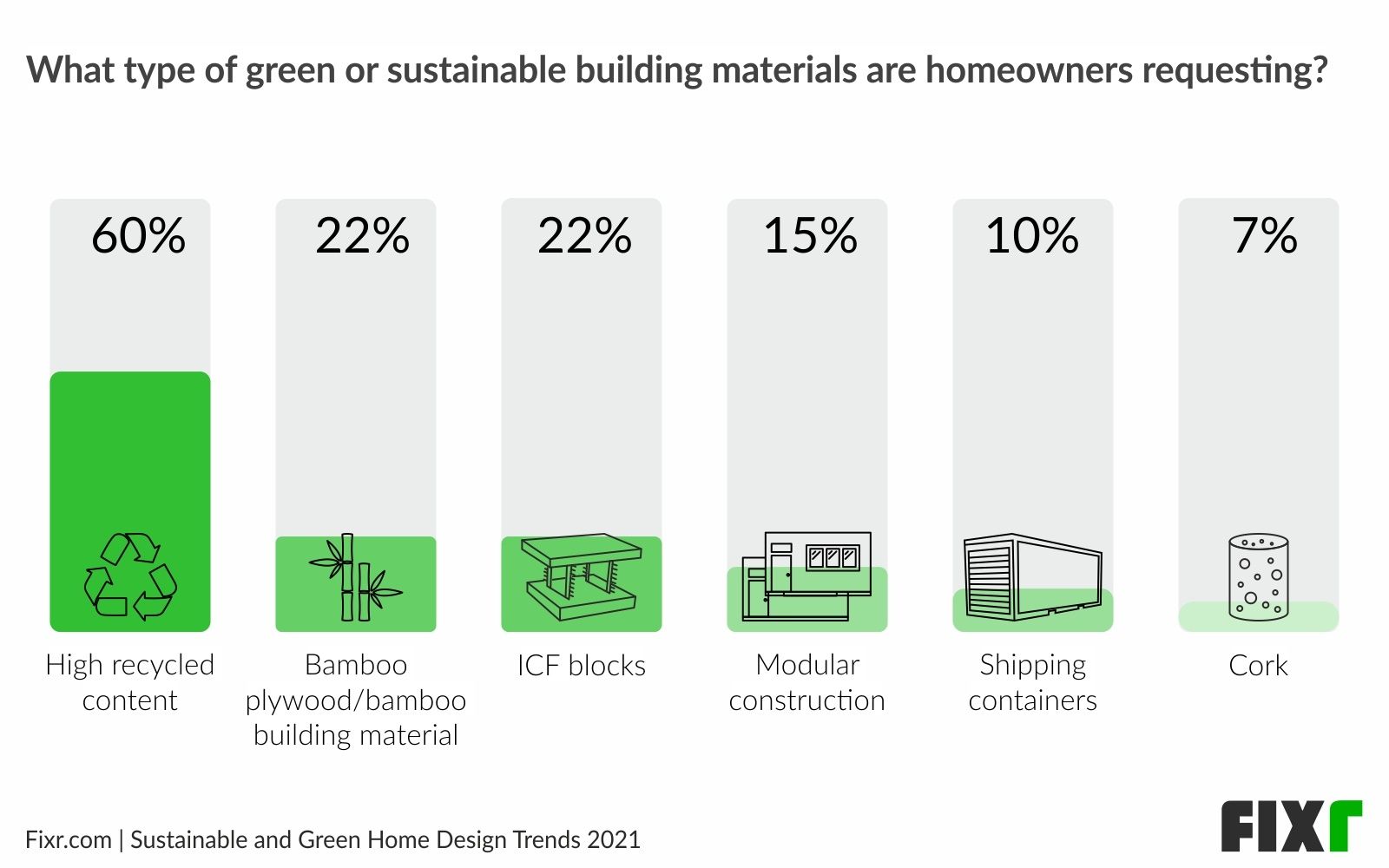
In this question, where experts were given the choice to choose more than one option, 60% of them report that homeowners are requesting high recycled content when it comes to green or sustainable building materials. 22% also answered that bamboo building materials and ICF blocks were among those materials being requested. Recycling and recycled material has been around since the 1800s, while these other materials are much newer in comparison. It may be, therefore, homeowners are more familiar with recycled material than the other things on offer.
Materials containing recycled content mean that they must have a certain percentage of material that has been recycled or used before. In some cases, this can mean that new materials can be 100% made from recycled materials or they can include percentages as low as 30%. Carpets, countertops, reclaimed wood floors, and some types of insulation are all good examples of materials that can contain high amounts of recycled content.
Bamboo plywood and other building materials are made from fast-growing bamboo. This tough material is actually a grass with a hard, durable fiber. This fiber can be made into plywood, flooring, and other building materials. It’s considered sustainable, because it grows much faster than trees used to produce new wood.
ICF blocks are Insulated Concrete Forms, and they’re a great method for building a durable, sustainable and comfortable home. The forms are made of concrete and are stacked like LEGOS to build the structure of the home. The empty forms are then filled with insulation, which makes the interiors very energy efficient and quiet. Once the home is built, it can be finished with any material or style, so there is no difference in the appearance of an ICF home from a traditional stick built home. The difference comes from lower energy bills, less ambient noise, and better protection from natural disasters.
Smart Technology and Solar Panels Top the List of Energy Features Homeowners are Investing in The Most
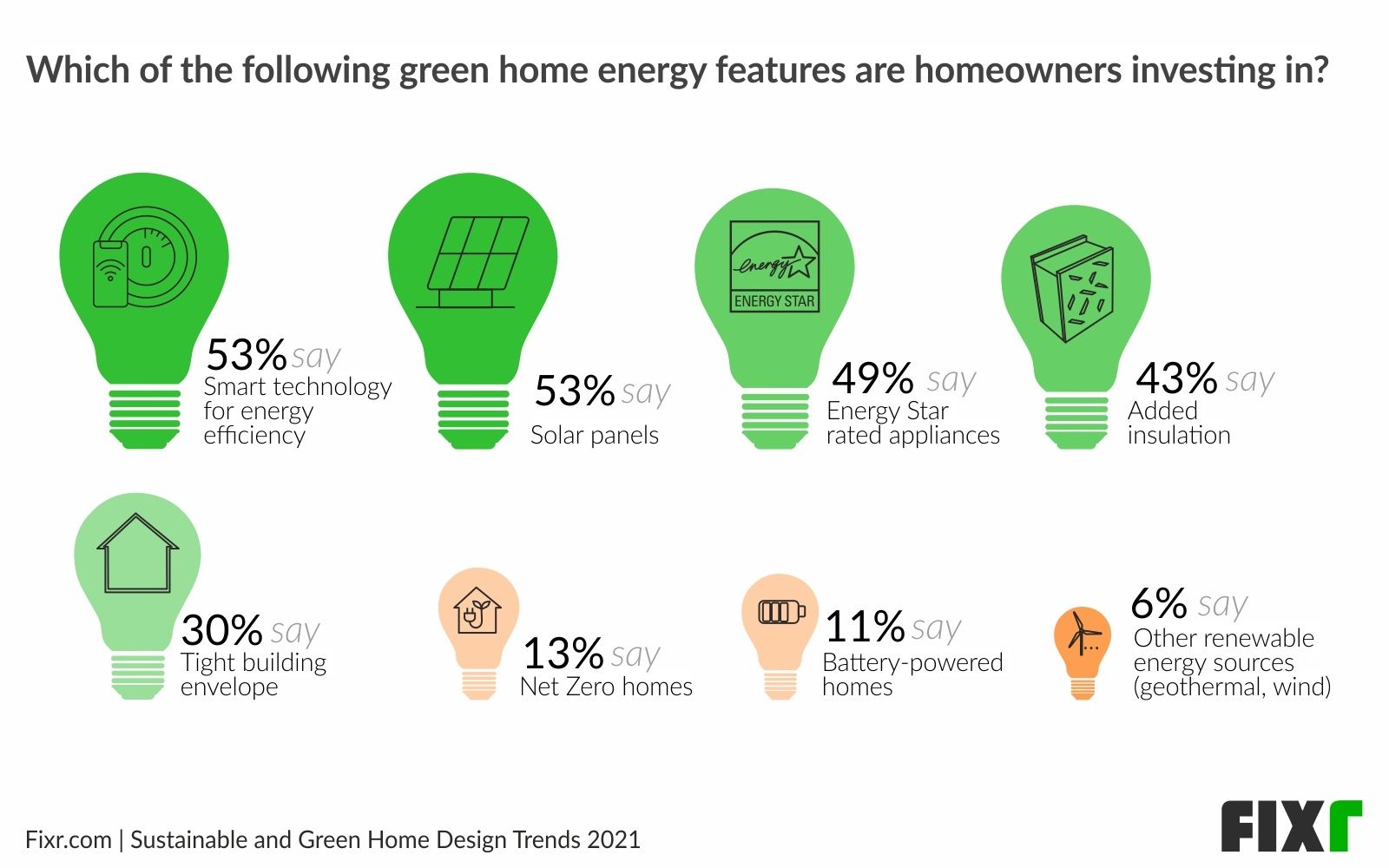
Results are mixed about which green home energy features homeowners are investing in. Both smart technology for energy efficiency and solar panels received 53% of the vote, while Energy Star rated appliances received 49% and added insulation received 43%.
When it comes to energy savings, however, many techniques are also recommended. In fact, layering some of these techniques together can actually help homeowners save the most, which may be why the interest in these areas is so mixed.
Smart technology for energy efficiency is a fairly broad term. Smart tech is designed to give you greater control over things like appliances and lights and thermostats. In many of these instances, this control helps you lower the amount of energy you use, which in turn can save you money. Thermostats, for example, can be especially helpful for temperature management as they can be adjusted from your phone and even use geo-location to activate HVAC systems when you are close. Costs for this type of project can range from $20 for a smart light bulb to $20,000 for a whole house setup.
Solar panels are another way to lower the amount of purchased energy you use but also a great option to use renewable energy at home. They help collect energy from the sun and turn it into electricity you can use to power your home. Most homes with solar panels still use some electricity from the grid, but can dramatically lower their energy costs. They can cost between $5,000 and $20,000 on average, depending on your location and how many you use.
Energy Star rated appliances can also help lower your energy usage and costs. These are appliances that are designed to use less energy while still accomplishing their original purpose. In most cases, an Energy Star rated appliance will use significantly less energy than a standard appliance. Their costs will vary depending on the appliance you select.
Conventional HVAC Systems with High EER/SEER Are The Most Popular Green Energy Options in 2021
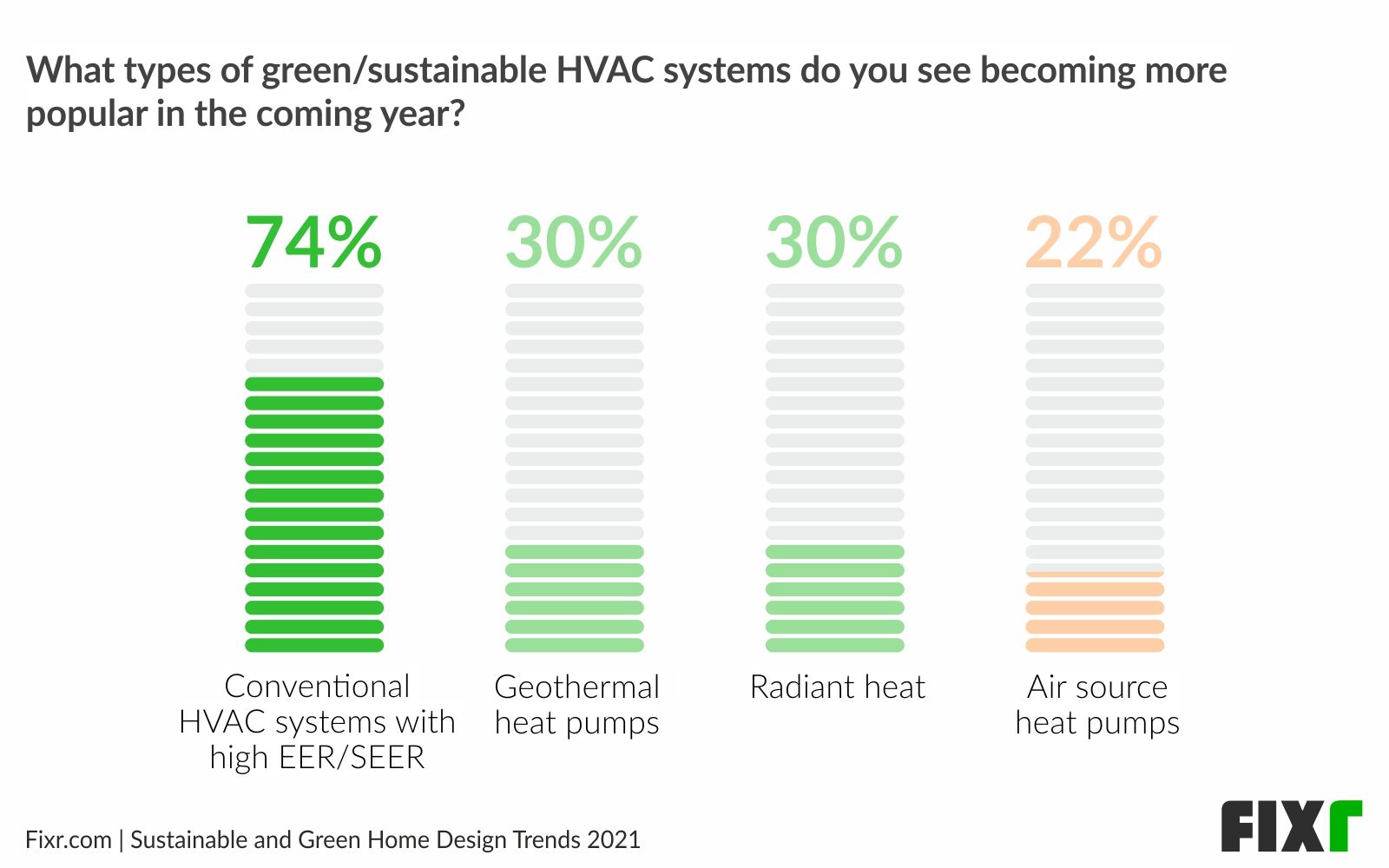
74% of experts feel that conventional HVAC systems with high EER/SEER will be the most popular type of green HVAC system in the future. This makes sense on a number of levels. Most homes are already set up for this type of system; upgrading to a more energy efficient model is much less invasive than switching to another method, even if that method is more efficient in the long run. In addition, while geothermal heat pumps and radiant heat, which both got 30% of the vote, are very efficient, they’re also very expensive to install, which can be off putting for some homeowners.
EER and SEER stand for Energy Efficiency Rating and Seasonal Energy Efficiency Rating, respectively. An HVAC system with a high EER or SEER will use considerably less energy than a system with a lower EER or SEER. While these systems cost more up front, they often pay for themselves over time, particularly in areas where you may have higher energy bills. For example, a high SEER air conditioner will pay for itself in a few years in a hot climate like Florida, but wouldn’t make as much sense in Maine. The cost of your system is only partially affected by the SEER/EER number; you can expect costs starting at $3,000, but they may go much higher depending on the unit.
Geothermal heat pumps are exceptionally energy efficient ways to heat and cool your home. They are expensive, costing around $12,000 to $30,000 on average. But they cost just pennies to run. They take heat from the ground and transfer it into your home to warm it. In the summer months it takes the heat from your home and transfers it to the ground. It does use electricity to do this, but considerably less than other systems.
Radiant heat works by forcing hot water through tubes beneath your floors or by using electricity running through matts beneath your floors. Because it heats the people and objects in the room directly, rather than heating the air, it’s much more efficient and comfortable. It does have high installation costs at around $20,000 and $40,000.
Air source heat pumps were chosen only by 22% of the experts. These heating and cooling systems move the heated air through a compressor and then in or out of your home, instead of using fuel to heat the air. Air source heat pumps come at a cost of $5,000 to $20,000 on average.
Off-Grid Features
Preferences Differ for Off-Grid Features in Homes in 2021
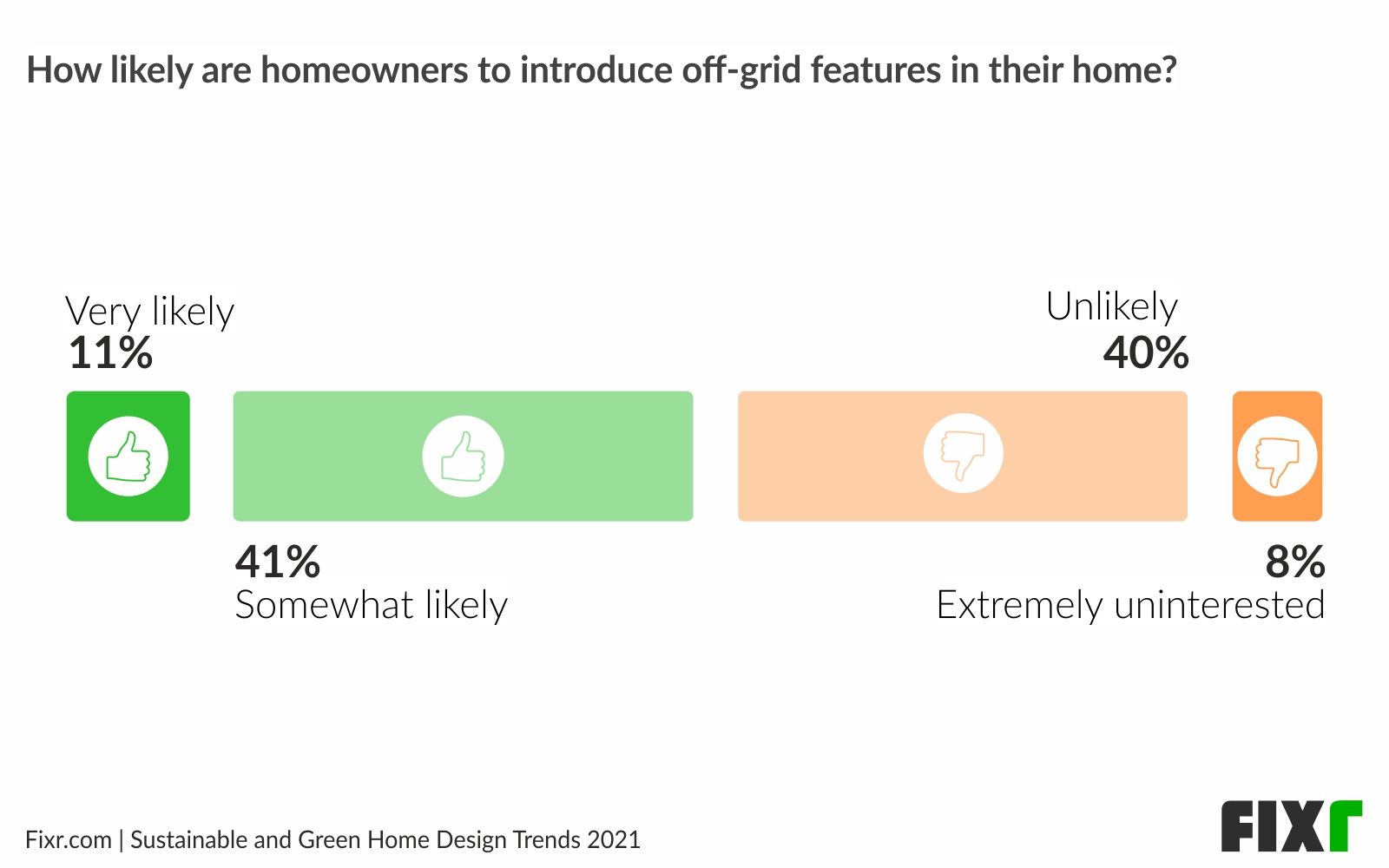
41% of experts say that homeowners will be somewhat likely to introduce off-grid features in their homes, while 40% say that it is unlikely that homeowners will make this request. Off-grid features such as solar panels, generators, rain water harvesting, and wind power all require a lot of backup features. They also have enormous upfront costs, which can mean that even those homeowners who are interested may be wary of getting started right away.
Generators and Rainwater Collection Systems are The Most Requested Off-Grid Features in 2021
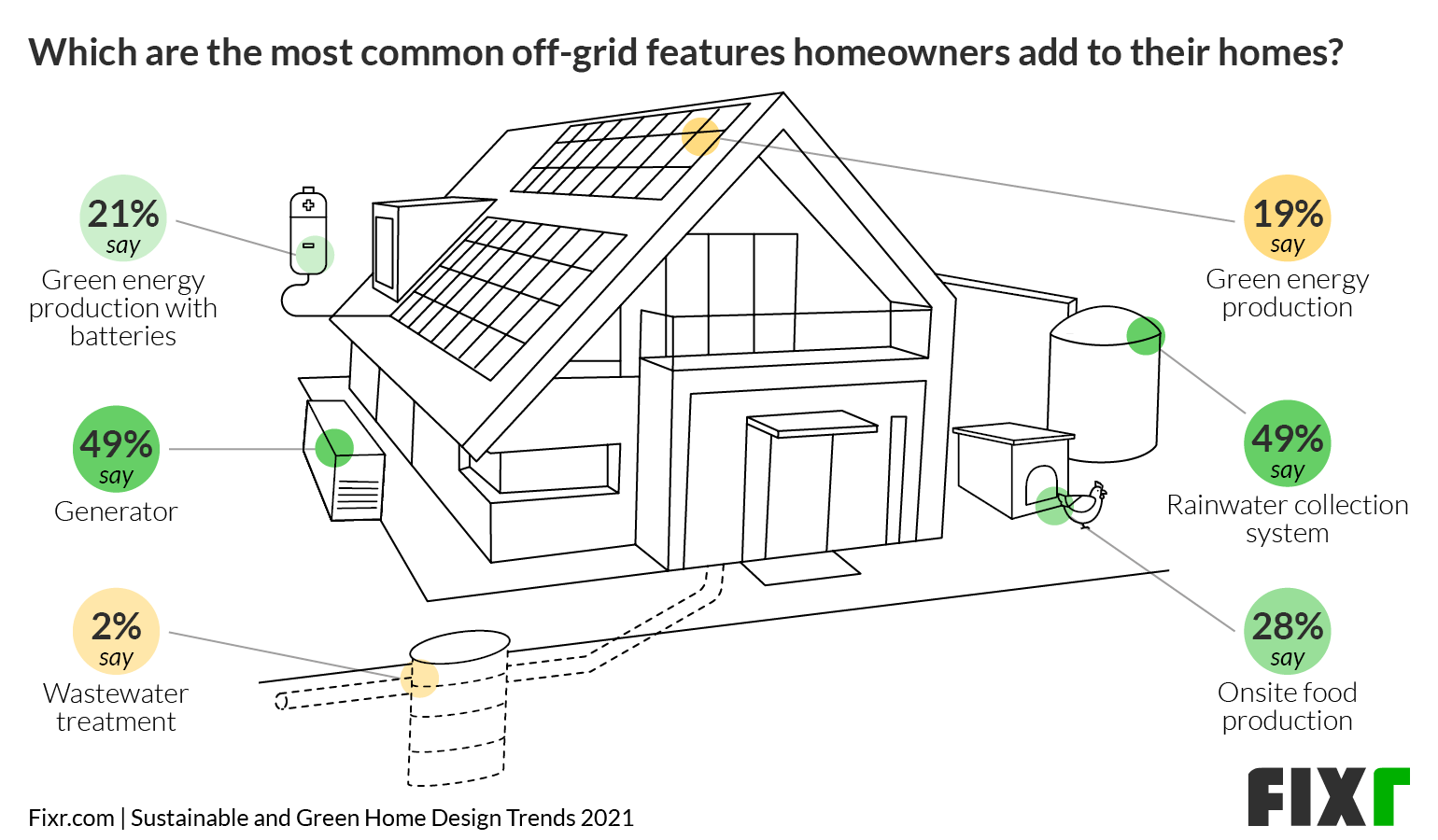
Both generators and rainwater collection systems get 49% of the vote when it comes to which off-grid features homeowners most frequently add to their homes. Given that both of these features can be useful in the event of major storms, and the fact that unstable weather conditions have been increasing, this does make sense that it would be where people are focusing.
Generators are a good option for allowing you to continue staying safe in your home during severe weather, such as what recently impacted Texas. They turn on when the power supplying your home goes out, allowing you to continue to have heat, hot water, air conditioning, and other important things that electricity normally provides. The national average for a whole house generator is $10,000 to $20,000. For a portable generator the cost goes down to $500 to $2,000.
Rainwater collection systems are different. They aren’t necessarily good for drinking, unless the water is treated, but they can be used for watering lawns and gardens, flushing toilets, and cleaning. These things can be necessary and useful in areas with low rainfall where capturing every drop can matter. These systems cost between $1,000 and $5,000.
The Future of Green Home Design is Bright
Interest in green design and sustainability is projected to continue its growth over the next few years. This report proves to us that although homeowners are not fully embracing the latest sustainable and green building designs yet, the interest in these technologies is big and is growing. Together with more innovation, affordability and increased consciousness of climate change, it is only a matter of time before we start seeing more eco-friendly homes and sustainable home designs.
Understanding where the trends lay amongst homeowners can help you get a better sense of what decisions to make both for your clients and for your own home. Regardless of whether you’re an industry professional or a homeowner, we hope that this information will help you make better, more informed decisions for the future.
Methodology
Fixr.com has asked 48 experts in the home remodeling and construction industry a series of multiple choice and open-ended questions to discover the most popular green and sustainable home trends among the average homeowner in 2021. In some cases they were given the choice to choose more than one option. All percentages were rounded for a better understanding
The survey respondents are top professionals with years of experience in the building, remodeling and construction fields. As always, we would like to extend our thanks to the respondents for taking the time to answer these questions.
-
 Abe Kruger
Abe Kruger -
 Adam Helfman
Adam Helfman -
 Angela Marie Cacace
Angela Marie Cacace -
 Anne Fougeron
Anne Fougeron -
 Anwar Khalifa
Anwar Khalifa -
 Bob Borson FAIA
Bob Borson FAIA -
 Brad Leavitt
Brad Leavitt -
 Brent Kendle
Brent Kendle -
 Carmen De La Paz
Carmen De La Paz -
 Charles Hendricks
Charles Hendricks -
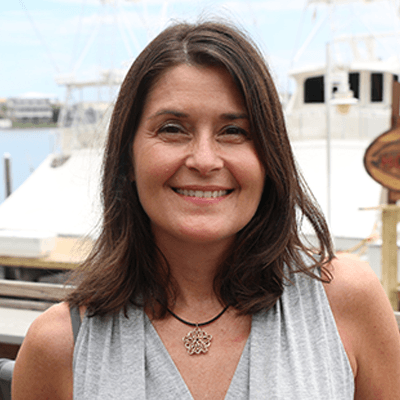 Chelsie Butler
Chelsie Butler -
 Donny Cuoto
Donny Cuoto -
 Eric Corey Freed
Eric Corey Freed -
 Eric Nelson
Eric Nelson -
 Jay Kallos
Jay Kallos -
 Jeff Pelletier
Jeff Pelletier -
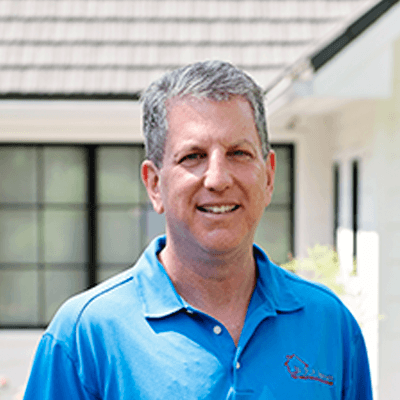 Jeffrey Bogard
Jeffrey Bogard -
 Jeremiah Russell
Jeremiah Russell -
 Jon Rufty
Jon Rufty -
 Lain Chappell
Lain Chappell -
 Larry Kush
Larry Kush -
 Lee Calisti
Lee Calisti -
 Lora Teagarden
Lora Teagarden -
 Marc Michaelson
Marc Michaelson -
 Mark English
Mark English -
 Mark Macdonald, P.E.
Mark Macdonald, P.E. -
 Neal Pann
Neal Pann -
 Neil Parsons
Neil Parsons -
 Paige Japhet
Paige Japhet -
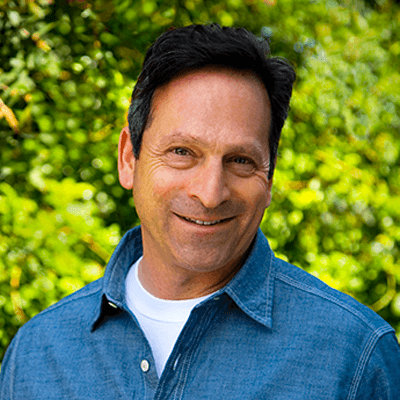 Paul Brant Williger
Paul Brant Williger -
 Paul Doherty
Paul Doherty -
 Pierrette Tierney
Pierrette Tierney -
 Robert Lord
Robert Lord -
 Robert Soens
Robert Soens -
 Sabine H. Schoenberg
Sabine H. Schoenberg -
 Sarabeth Asaff
Sarabeth Asaff -
 Scott Carson
Scott Carson -
 Scott Cullens
Scott Cullens -
 Shan Stassens
Shan Stassens -
 Steve Parker
Steve Parker -
 Susan Cohan
Susan Cohan -
 Susan P. Berry
Susan P. Berry -
 Thomas C. Donnelly, ASLA
Thomas C. Donnelly, ASLA -
 Todd Glowka
Todd Glowka -
 Tom Kraeutler
Tom Kraeutler -
 Toni Lewis
Toni Lewis -
 Warren O'Shea
Warren O'Shea -
 Will Herring
Will Herring


